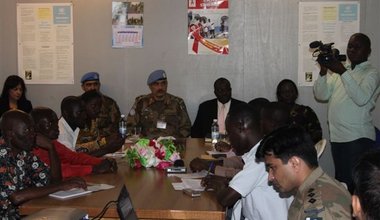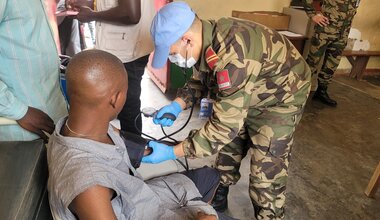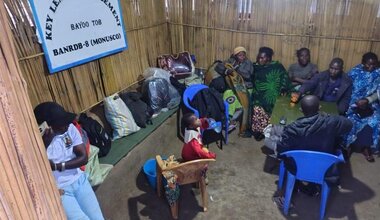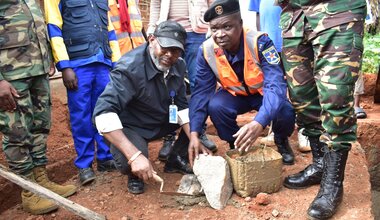MONUSCO Sud-Kivu Brigade explains its deployment plan to the media

Bukavu, 30 June 2012 – Because of the fragile security situation in the province of Sud-Kivu that has prevailed since the suspension of Operation "Amani Kamilifu" for an indefinite period of time due to the defection of some element of the Congolese Armed Forces (FARDC), the Sud-Kivu Brigade of the United Nations Organization Stabilization Mission in the Democratic Republic of the Congo (MONUSCO) presented its activities and deployment plan in the province. This presentation took place during a meeting with the press in Bukavu on 27 June 2012.
There have been persistent rumors of recruitment in Katasomwa and Kalehe-centre, about 100 km from Bukavu, and secrete meetings organized in the provincial capital in order to intensify the clashes between FARDC and the M23 rebellion. In this context, the Brigade Commander observed that this situation is of major concern for MONUSCO, especially now, when the FARDC are redeployed in neighboring Nord-Kivu, thus creating a security vacuum in Sud-Kivu. MONUSCO deployed to the best of its capabilities in the abandoned areas in order to be prepared for any event.
MONUSCO also reviewed its concept of field deployment by opting for the short-term deployment of mobile bases to cover as many areas as possible. "We are going through a critical period and we must all work together, including with you journalists to sensitize the populations and provide relevant information on the protection of civilians," the Brigadier General explained to the journalists. But in order to remove any doubts on these rumors, he further clarified that "We currently have no information that would allow us to confirm any recruitments or meetings".
The meeting allowed the officials of MONUSCO Force to explain their deployment plan in the province. The Brigade Commander said that from May 2011 to June 2012, the Force had deployed nearly 5000 men in the eight territories of Sud-Kivu and 10 joint operations were conducted. Also, the Force established four headquarters, 17 combat bases, two temporary bases, 245 mobile operation bases, eight military observers' sites, 95 standing combat deployments, and three joint command positions. During the same period, the Force organized 12401 motorized and dismounted patrols, 32 air missions, 543 humanitarian escorts; and implemented many social projects including the construction of roads, bridges, schools and health centers.
Biliaminou Alao/ MONUSCO
 UN
UN United Nations Peacekeeping
United Nations Peacekeeping






